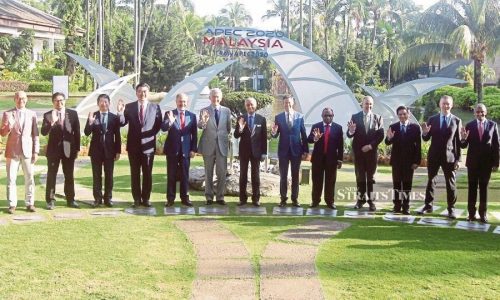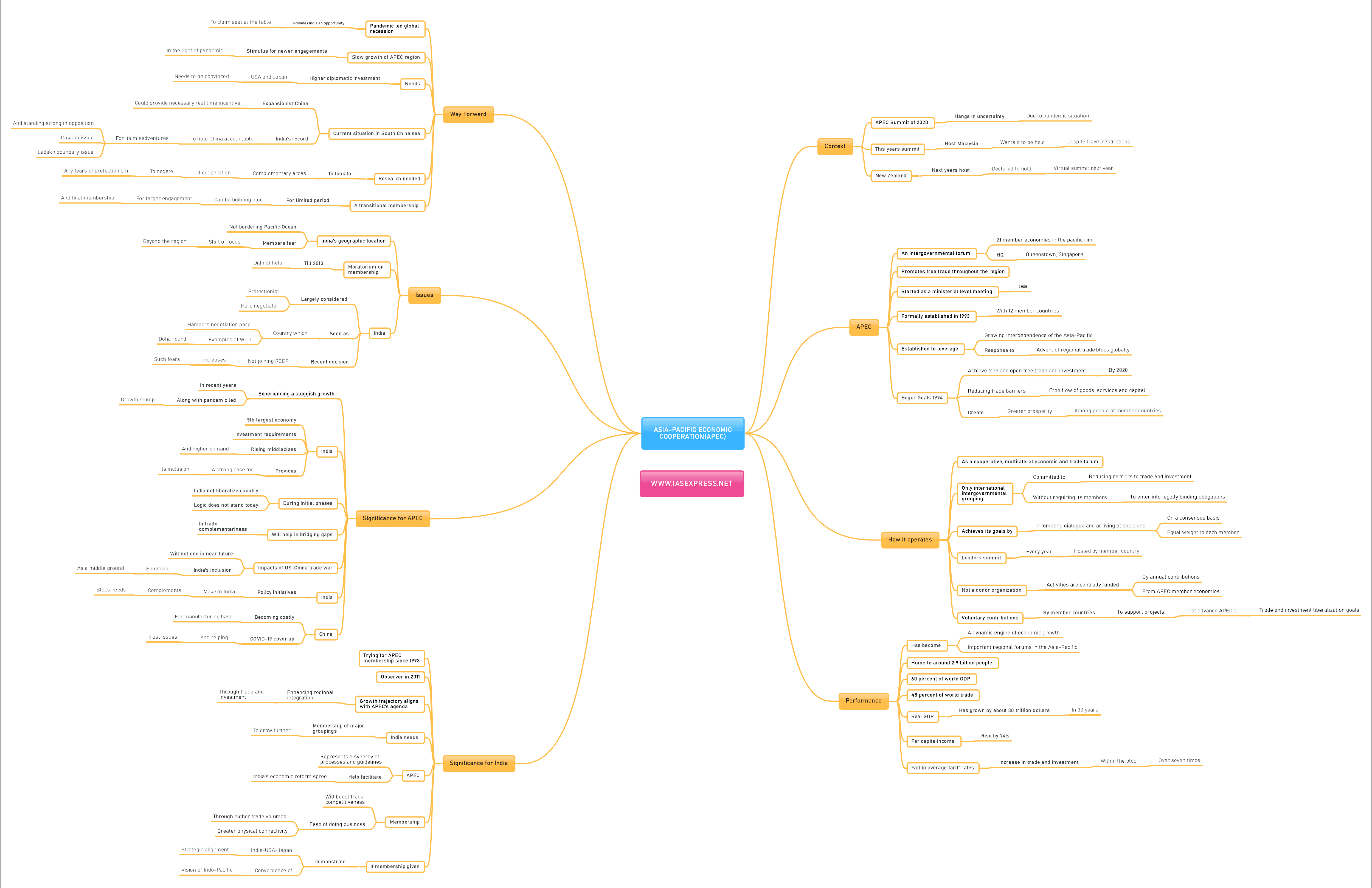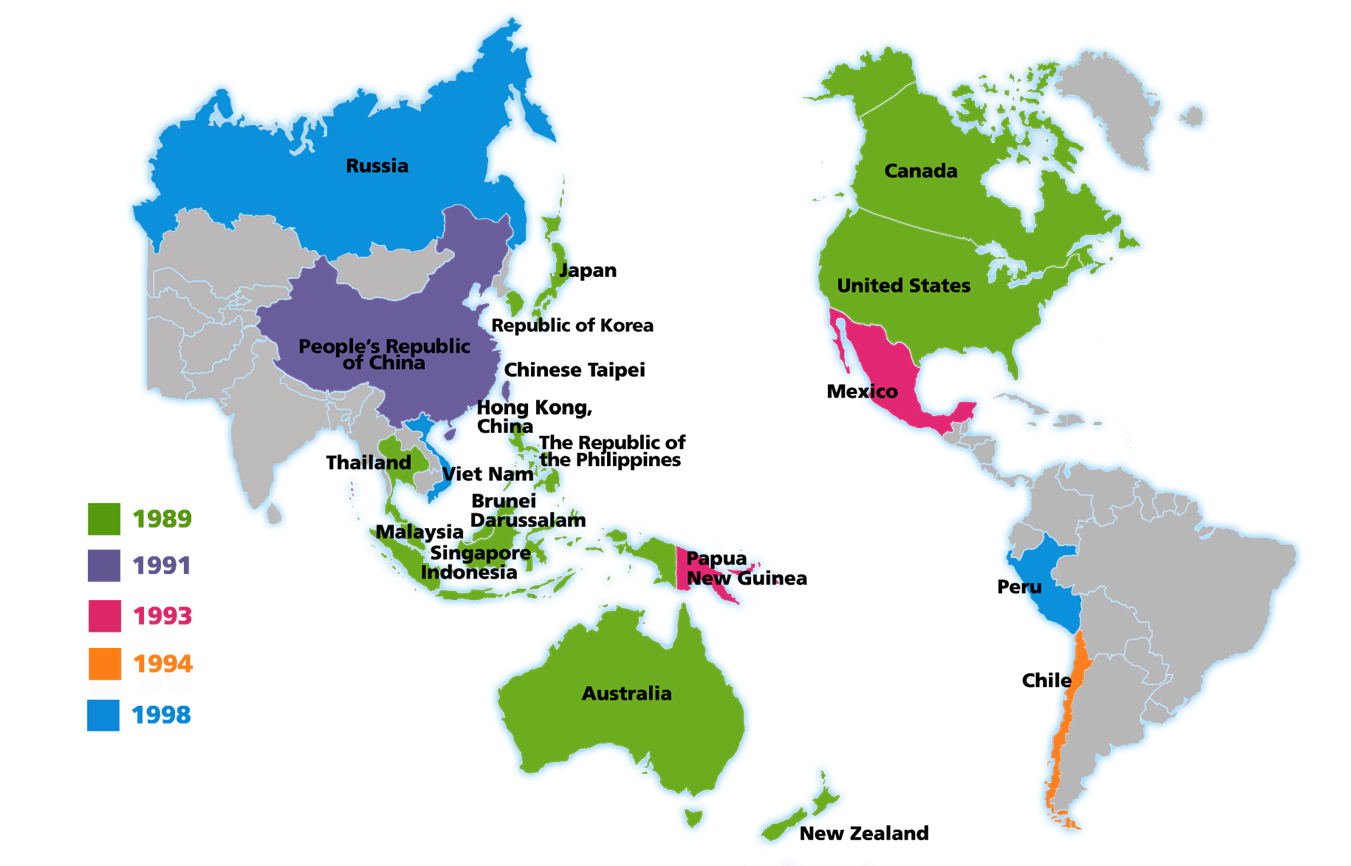Asia-Pacific Economic Cooperation: Advantage India

Asia-pacific Economic Cooperation (APEC) Summit of 2020 has still not been ruled out by the host country Malaysia as it said that the leader’s summit of APEC is still possible despite the pandemic. The next year’s host New Zealand has already said that it will use virtual platforms to conduct the meeting due to travel restrictions and uncertainty caused by the COVID-19 outbreak. Already the 2018 Chile summit was canceled because of violent anti-government protests.
This topic of “Asia-Pacific Economic Cooperation: Advantage India” is important from the perspective of the UPSC IAS Examination, which falls under General Studies Portion.
What is Asia-Pacific Economic Cooperation (APEC)?
- APEC is an intergovernmental forum of countries in the Pacific rim area that promotes free trade throughout the region. It consists of 21 member economies.
- It was started as a Ministerial-level meeting in 1989 which was formally established in 1993 with 12 member countries. Its headquarters is in Queenstown, Singapore.
- Currently, it has 21 member countries of Asia-Pacific. India is not a member of the APEC.
- It was established to leverage the growing interdependence of the Asia-Pacific in response to the growing interdependence of Asia-Pacific economies and the advent of regional trade blocs globally.
- The Bogor goals of 1994 commits to achieve free and open free trade and investment by 2020 through reducing trade barriers in the region and free flow of goods, services, and capital among APEC economies.
- APEC strives to achieve greater prosperity for the region by promoting balanced, inclusive, and sustainable growth and by accelerating regional economic integration.
- The APEC members are described as economies as the APEC process is mainly concerned with trade and economic issues, with members engaging as economic entities.
How APEC operates?
- APEC operates as a multilateral and cooperative economic and trade forum. It is the only intergovernmental grouping in the world which commits itself to reduce barriers to trade and investment without requiring any legally binding obligations for its member countries.
- Instead, APEC operates by promoting dialogue and arrives at decisions on a consensus basis. It is a democratic forum that gives equal weight to the views of all members.
- Every year, one of the economies is responsible for chairing the annual Economic Leaders’ Meeting, selected ministerial meetings, and other engagement for a for its members.
- APEC activities are funded by annual contributions from its member economies. These contributions are used to operate the Secretariat in Singapore and various other projects which are necessary for APEC’s economic and trade goals.
- Voluntary contributions by the member countries are necessary to support projects that advance APEC’s trade and investment liberalization and to meet capacity-building needs, especially for APEC developing economies.
What has been the gain of the region due to APEC?
- APEC has become a dynamic engine of growth and an important regional forum in the Asia-Pacific. It is home to around 2.9 billion people and engages in approximately 60 percent of world GDP and 48 percent of world trade (as of 2018 according to the official website).
- Since the forming of APEC, real GDP has increased by 2.5 times. Residents of the Asia-Pacific have seen an increase of 74% in their per capita income. the trade bloc has lifted millions out of poverty and has created a sizable middle class in less than three decades of its operation.
- Average tariffs along the boundaries of member countries fell from 17 percent in 1989 to 5.3% in 2018. Banking on it, the region’s total trade increased over seven times (outpacing the rest of the world) and almost two-thirds of this trade has occurred between member economies.
- APEC has launched “Ease of Doing Business Action Plan” in 2009, with an aim of making business cheaper, easier and faster in the region. The ease of doing business in the Asia-Pacific has been increased by 11.3 percent across all areas, including starting a business, getting credit, etc.
- It has been growing stronger with various initiatives like APEC business travel card, APEC supply chain connectivity, etc.
What is the significance of APEC for India?
- India is trying for APEC membership since 1993. It was first welcomed as an observer in 2011.
- APEC represents more than a third of the world population, 47% of global trade, and 60% of world GDP.
- India’s growth trajectory aligns with APEC’s agenda of enhancing regional integration through trade and investment liberalization and facilitation across the Asia-Pacific.
- India is one of the six largest global economies and its share of world GDP has more than doubled in the last 30 years. India has been engaged with extensive trade with the world. It has nowhere to grow but outwards.
- As India looks to engage even more with the East through its Act East policy, APEC membership provides a perfect space for India to improve this engagement.
- India is projected to become the third-largest economy and will need over $1 trillion in investment to achieve this potential. APEC will provide a huge market and source of investment.
- India has extensive investments in many APEC countries. APEC membership will only help this economic cooperation to grow.
- APEC represents a synergy of processes and guidelines. APEC membership will facilitate India’s economic reform spree with the inculcation of best practices.
- The trade bloc membership will boost trade competitiveness and the ease of doing business through higher trade volumes and greater physical connectivity.
- APEC membership will boost the Indo-USA relationship by demonstrating American commitment to help India gain a greater role in global institutions.
- India sees the region as Indo-pacific and the vision of Indo-pacific has convergence in the visions of important member countries like Japan, the USA, Australia. Membership will boost strategic engagement in the region.
What India could bring to the APEC table?
- APEC has been experiencing sluggish growth in recent years, India with its rising middle class and high demand provides a huge market for its products.
- When APEC was taking shape, India was not a liberalized country but in the 21st century, India’s efforts and intentions to become an important part of the global value chain are visible.
- The trade regimes such as APEC creates synergy in policy and standards for member countries. Opening up to India will bridge this gap and improve trade relations.
- The US-China trade war has created a rift in the APEC. As it is not supposed to end in the near term, India with a history of non-alignment and flagbearer of the underdeveloped world could give confidence to the smaller economies in the bloc.
- India is on the path of manufacturing resurgence through its programs like Make in India and Atmanirbhar Bharat. It could give APEC an alternative to China in manufacturing goods. As the Chinese land is being increasingly costly due to increasing labor prices, India provides an opportunity for businesses.
What are the issues in getting APEC membership?
- India’s geographic location is not conducive for APEC membership as India does not border the Pacific Ocean. Countries in the bloc fear shift of focus of bloc beyond the region due to India’s inclusion.
- There was a moratorium of 10 years from 1997 on membership which was extended till 2010 which hampered India’s efforts to become a member of the group.
- India is largely considered as a protectionist country unable to open up to the world as required by the group. Recent Indian decision not to join RCEP has strengthened this belief.
- India’s hard trade negotiations that support the growth of its MSMEs and create opportunities for its poor and middle class. Given the consensus-based nature of the forum this outlook is seen as slowing down of trade cooperation momentum.
What is the way forward?
- The Pandemic led global recession provides India an opportunity to once again stake its claim in APEC. As the APEC has registered slow growth in the recent past due to pandemic it must look for opportunities outside the bloc to help strengthen its economy.
- India is extensively engaged in East Asia. The engagement spree needs to be continued. It needs to strengthen diplomatic efforts with its close partners Japan and the USA.
- Looking at the current situation in the South China Sea, many countries will back India to become a member of APEC as a balancing force to China. India in recent years has successfully shown that it is strong enough to look in the eye and oppose any Chinese misadventures.
- More research needs to be done to come up with complementary areas of cooperation among APEC countries and India to fasten the process of engagement. It will negate any fears among the members regarding Indian involvement.
- A transitional membership is one option that APEC could try before making India a full member of the bloc. This will regulate the relation and will create incremental opportunities for a full membership.
Conclusion
The pandemic and resulting economic recession that has engulfed the world demands innovative ways and newer cooperation to kickstart the global growth engine. In this backdrop, India-APEC relationship could be one of the green shoots. India also needs to be clear on its priorities to negate any RCEP like situation.
Practice Question for Mains
Discuss the potentials and roadblocks in India’s membership to the APEC. (250 words)
https://www.apec.org/About-Us/About-APEC/Member-Economies.aspx
https://www.apec.org/About-Us/About-APEC/Achievements-and-Benefits
https://www.apec.org/About-Us/How-APEC-Operates/APEC-Observers
https://www.nytimes.com/reuters/2020/07/25/world/asia/25reuters-apec-summit-malaysia.html
https://www.orfonline.org/research/india-apec-hanging-between-rhetoric-reality-50561/



